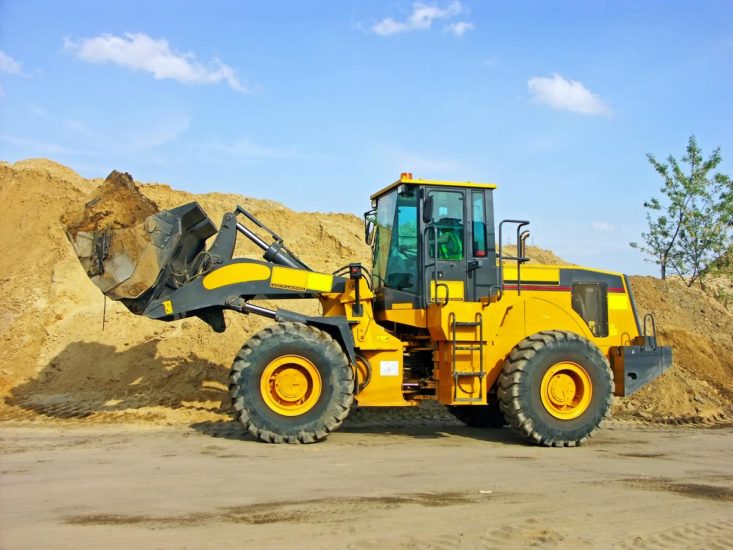Top Equipment Rental Company for All Your Needs
Top Equipment Rental Company for All Your Needs
Blog Article
Leasing Vs. Acquiring Building Tools: Making the Right Choice for Your Job
When embarking on a building task, one of the vital decisions that forecast stakeholders and managers deal with is whether to purchase or lease construction devices. The choice hinges on different variables such as price considerations, project period, devices maintenance, adaptability, scalability, and danger administration.
Price Considerations
Renting devices typically requires lower preliminary payments contrasted to purchasing, making it an attractive alternative for short-term tasks or contractors with spending plan constraints. In the lengthy run, constantly leasing devices can accumulate greater expenses than acquiring, especially for extended tasks.
On the various other hand, purchasing building and construction equipment involves higher in advance prices but can lead to lasting financial savings, particularly for long-lasting tasks or constant users. Possessing equipment gives flexibility, comfort, and the potential for resale value once the project is finished. In addition, possessing tools permits customization and experience with specific machinery, possibly increasing performance and performance on-site. Eventually, the decision between renting and purchasing building equipment rests on the job's period, regularity of use, spending plan factors to consider, and long-lasting economic goals.
Project Duration

Conversely, for lasting tasks or continuous building and construction work, acquiring equipment can be the extra affordable choice. Purchasing equipment can result in cost financial savings over time, particularly if the equipment will certainly be often made use of. Furthermore, owning tools provides a sense of control over its availability and permits customization to fit details project demands.

Devices Upkeep
Given the essential duty project period plays in determining the most cost-effective strategy between buying and renting building equipment, the focus currently changes towards analyzing the vital aspect of equipment upkeep. Appropriate upkeep is crucial for guaranteeing the optimal performance and long life of building and construction devices. Renting equipment frequently includes the benefit of having well-kept machinery given by the rental business. This can ease the burden of maintenance tasks from the task owner or professional, saving time and effort. On the various other hand, possessing equipment calls for a proactive strategy to maintenance to prevent failures, make sure safety and security, and extend the tools's lifespan. Routine evaluations, servicing, and prompt repair services are essential to keep owned and operated tools in top working problem. Variable in upkeep expenses when choosing in between purchasing and renting out, as disregarding maintenance can result in costly repair services, downtime, and task delays. Ultimately, a well-kept building and construction tools fleet, whether rented or owned, is crucial for the efficient and effective conclusion of construction jobs.
Flexibility and Scalability
In the world of building and construction equipment monitoring, the aspect of flexibility and scalability holds significant significance for job effectiveness and source application. Choosing to rent building tools offers a high level of versatility as it permits the quick modification of tools types and amounts based upon the progressing needs of article a project. Renting out enables service providers to access a vast array of specific equipment that may be required for certain jobs without the long-term dedication of possession. This versatility is especially advantageous for projects with differing requirements or uncertain durations (construction equipment rentals).
In addition, scalability, another critical aspect, is inherently connected to adaptability. Leasing building and construction equipment uses the advantage of dock pile driving equipment conveniently scaling operations up or down as project demands rise and fall. Service providers can rapidly include or trade devices to match the task's altering demands without the restrictions of owning properties that might come to be underutilized or outdated. This capability to scale resources effectively can cause price savings and enhanced project timelines, making leasing a favorable option for jobs needing flexibility and receptive resource allotment.
Risk Management
Reliable risk monitoring in building tools operations is vital to guaranteeing project success and mitigating prospective monetary losses. Construction jobs inherently entail various risks, such as devices breakdowns, accidents, and job delays, which can dramatically affect the project timeline and budget. By thoroughly taking into consideration the risks related to owning or leasing building tools, task managers can make enlightened choices to lessen these prospective dangers.
Renting out construction devices can provide a level of risk mitigation by moving the responsibility of maintenance and repair services to the rental business. This can lower the financial worry on the job proprietor in case of unanticipated equipment failings (construction equipment rentals). Additionally, leasing offers the versatility to access specialized tools for particular task stages, reducing the threat of owning underutilized machinery
On the other hand, owning construction tools offers a feeling of control over its usage and maintenance. Nonetheless, this additionally implies birthing the full responsibility for repair services, upkeep prices, and depreciation, increasing the financial risks connected with tools ownership. Careful risk assessment and factor to consider of factors such as project period, tools use, and upkeep demands are crucial in identifying the most suitable alternative for effective threat management in construction tasks.
Verdict
Finally, when determining between renting and getting building and construction tools, it is very important to consider cost, project period, devices visit here maintenance, scalability, flexibility, and danger administration. Each factor plays an important role in establishing the most suitable choice for the task at hand. By very carefully examining these elements, project managers can make an educated choice that lines up with their budget, timeline, and total job objectives.

Report this page